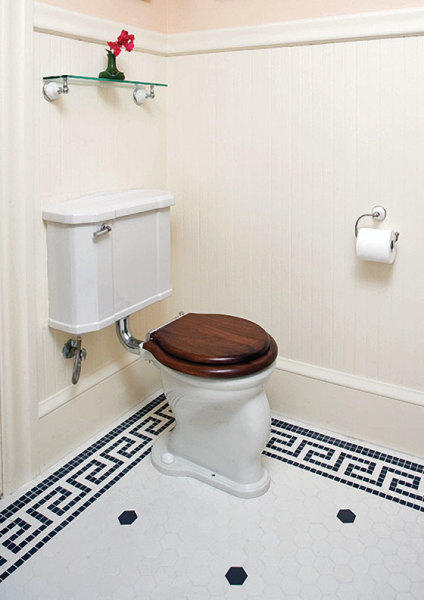
Keeping an old toilet running smoothly means keeping an eye out for its quirks. (Photo: Emily Hagopian)
Tip #1
Old toilets are water hogs by definition. To make them more environmentally friendly, put something in the tank that occupies space. It can be a dam mechanism purchased at the hardware store, a heavy bag filled with water, or even a brick or two. All will reduce the tank’s holding capacity, resulting in lower water usage.
Tip #2
A vintage bowl that quickly (and repeatedly) accumulates a moldy-looking residue is probably “burned out” or scarred by acid damage from chemical de-cloggers. While not an easy fix, it’s possible to sand the interior of the bowl by hand with increasingly finer sandpaper, returning much of the original polish.
Tip #3
One of the best investments you can make is a high-quality supply line—preferably one of braided stainless steel. It doesn’t look period-friendly, but it isn’t too distracting—and old corrugated pipes and compression fittings have been known to come loose, resulting in surprise floods. Solid brass components—nuts, bolts, washers, etc.—ensure longevity as well.
Tip #4
If a pressure toilet won’t stop flushing, don’t panic! These unusual toilets, popular for a decade or so at the turn of the century (and still used in commercial buildings), adjust their flush capacity by the turn of a screw. Look for one on the top or the side of the handle’s mount and turn it clockwise.
Tip #5
Always avoid inadvertent damage! Never use harsh chemical cleaners to unclog an old bowl—these products can etch and discolor the surface, resulting in permanent damage or even burnout.







